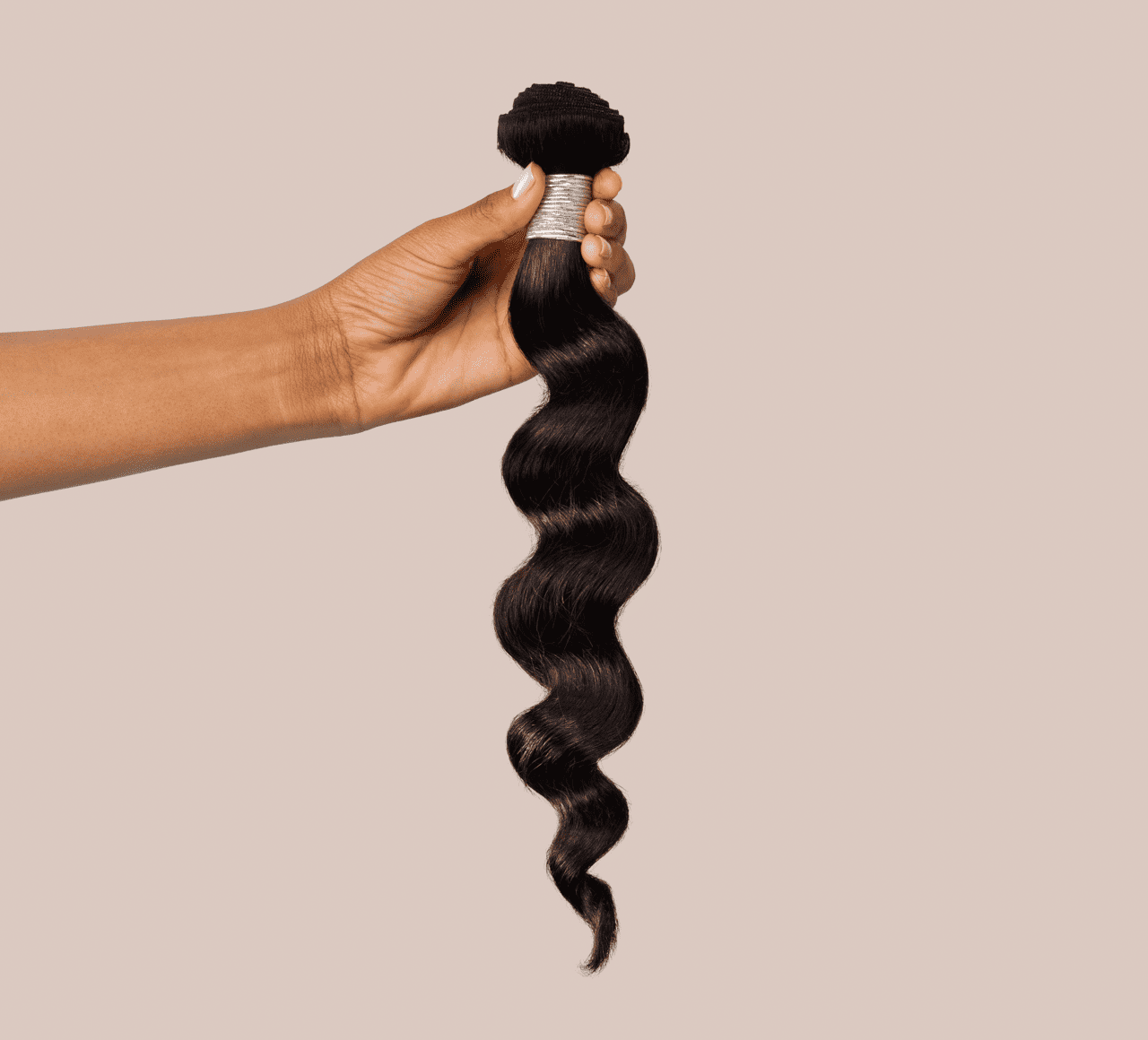Hair bundles, often hair weaves or extensions, are essential to the beauty industry, generating millions in sales annually. Whether for aesthetic, fashion, or medical reasons, people worldwide buy hair bundles, creating a demand that new businesses can fulfill. This article aims to provide you with a step-by-step guide on how to start selling hair bundles.

Let us see how to sell hair bundles:
How to Start Selling Hair Bundles?
To start selling hair bundles, find bundle suppliers and allocate your capital to shipping, packaging, and marketing. If you have a 50% profit margin, you can accomplish $10K in revenue in 6 months with only $2K in investment capital.
- Find reliable hair bundle suppliers and negotiate favorable pricing and terms.
- Allocate a portion of your capital to cover shipping and packaging costs.
- Invest in marketing efforts to promote your business and attract customers.
- Set up an online store or website to showcase and sell your hair bundles.
- Determine your pricing strategy with a profit margin of 50%.
- Monitor and analyze your sales and expenses every month.
- Aim to achieve $10,000 in revenue within six months with your $2,000 investment capital.
Starting Hair Bundles business with $2000 Capital
Here’s a step-by-step analysis of how you can approach this:
- Sourcing the hair bundles:
- You invest $1500 to purchase a variety of high-quality hair bundles from reliable suppliers.
- You allocate $300 for shipping and packaging costs.
- Setting up an online store:
- You spend $100 to set up a professional-looking website and domain.
- Monthly website maintenance expenses, including hosting and domain fees, amount to $50.
- Marketing and advertising:
- You allocate $300 for initial marketing efforts, including social media ads and influencer collaborations.
- You plan to spend $100 monthly on marketing to attract customers and generate sales.
- Operational expenses:
- You estimate $200 monthly for miscellaneous expenses such as customer support, packaging materials, and software subscriptions.
Now, let’s analyze the potential revenue and profitability of your hair bundle business:
- Pricing and profit margin:
- You set the average selling price for a hair bundle at $100.
- Then, with a good supplier relationship, you negotiate a profit margin of 50%.
- Therefore, your profit per hair bundle sold is $50.
- Sales projections:
- With your marketing efforts and an appealing website, you expect to sell 20 hair bundles in the first month.
- Assuming a 10% monthly growth rate in sales, you forecast the following sales for the next six months:
Month 1: 20 bundles Month 2: 22 bundles Month 3: 24 bundles Month 4: 26 bundles Month 5: 28 bundles Month 6: 31 bundles
- Revenue and expenses:
- Month 1:
- Revenue: 20 bundles x $100 = $2000
- Expenses: $300 (marketing) + $200 (operational) + $50 (website) = $550
- Profit: $2000 (revenue) – $550 (expenses) = $1450
- Month 2:
- Revenue: 22 bundles x $100 = $2200
- Expenses: $100 (marketing) + $200 (operational) = $300
- Profit: $2200 (revenue) – $300 (expenses) = $1900
(Similarly, using the same approach, you can calculate revenue, expenses, and profit for the remaining months.)
- Month 1:
- Overall profitability:
- Total revenue for the first six months: $12,460
- Total expenses for the first six months: $2,950
- Total profit for the first six months: $9,510
Based on this analysis, it’s evident that starting a hair bundle business with an initial investment of $2000 can be profitable. However, remember that these numbers are just estimates, and results may vary. Therefore, it’s important to continuously analyze and adapt your strategies to maximize your business’s success.
Step 1: Understand the Market
The first step in any business venture is to understand the market. Research what types of hair bundles are famous, what the leading manufacturers and suppliers are, and who your potential customers could be. Understand their preferences, the current trends, and the possible gaps in the market you could exploit.
Customer Analysis: Identify your target demographic. Hair extensions appeal to a wide range of customers, from those seeking to augment their hairstyles to individuals coping with hair loss. Therefore, understanding their needs, preferences, and buying behaviors is critical.
Competitor Analysis: Identify who your competitors are, what products they sell, their pricing strategy, and how they market their products. This information will help you create a unique value proposition that sets you apart.
Product Analysis: Decide what types of hair bundles you want to sell. Different types include synthetic, human hair (virgin, Remy, non-Remy), and other origins (Brazilian, Peruvian, Malaysian, Indian).
Step 2: Create a Business Plan
A solid business plan is the foundation of a successful business. It should detail how you plan to operate, your marketing strategy, financing options, and long-term goals. Include the following sections:
Executive Summary: This is a brief overview of your business, including your business name, what you’ll be selling, and why your business will be successful.
Company Description: Detail your business structure (sole proprietorship, LLC, etc.), your mission statement, and a list of crucial company principles.
Market Analysis: This is where you’ll incorporate your findings from step one.
Organization and Management: Here, you’ll outline your business’s organizational structure, ownership information, and information on your management team.
Product Line: Detail what you’re selling, the benefits of your products, and any copyright or patent information.
Marketing and Sales Strategy: Define your marketing plan and sales strategy and how you’ll attract and retain customers.
Funding Request: If you’re seeking investors, detail how much funding you’ll need over the next five years and what it will be used for.
Financial Projections: Provide an outlook of your business’s economic future, including projected income statements, balance sheets, and cash flow statements.
Appendix: This section is optional and can include any additional supporting documents you want to add.
Step 3: Find Reliable Suppliers
Finding reliable suppliers is crucial to your hair bundle business. Whether you drop ship or hold inventory will significantly impact your supplier choice. Remember, the quality of your hair bundles directly reflects your business, so choose wisely. It’s advisable to order samples to check the quality before making a bulk order. Alibaba, DHgate, and Global Sources are good places to start looking for suppliers.
- Alibaba: a popular online platform that connects businesses with suppliers worldwide.
- AliExpress: An online retail service offering products from various suppliers, including hair bundles.
- DHgate: An e-commerce platform that connects buyers with Chinese suppliers, including hair bundle sellers.
- Wholesale Hair Vendors: Look for established wholesale hair vendors specializing in hair bundles.
- Trade Shows: Attend hair and beauty trade shows to meet and connect with suppliers directly.
- Online Directories: Utilize directories like Hair Vendor List or Wholesale Central to find reputable suppliers.
- Local Suppliers: Explore local beauty supply stores or distributors who may offer hair bundles.
- Referrals: Seek recommendations from other business owners or professionals in the hair and beauty industry.
Step 4: Legally Establish Your Business
Choose a business name and register it with your state’s Secretary of State. Next, obtain an Employer Identification Number (EIN) from the IRS, which is free and can be done online. Depending on your location and the nature of your business, you may need additional permits or licenses to operate legally. Taking out liability insurance to protect your business from lawsuits is also advisable.
Step 5: Create an Online Presence
In today’s digital age, having an online presence is a must. This can be through websites, social media platforms, or online marketplaces. Your online presence should be professional and attractive, making buying easy for your customers. In addition, make sure to incorporate SEO practices to improve your website’s visibility on search engines.
Step 6: Marketing Your Products
Marketing is an essential part of your business. Use social media advertising, content marketing, and email marketing to reach potential customers. You can also collaborate with influencers in your niche to reach a larger audience.
The best results, in my opinion, you can get if you advertise on Facebook.
- Vast audience reach: Facebook has billions of active users worldwide, allowing you to target an extensive and diverse audience. You can define your target audience based on demographics, interests, behaviors, and more, ensuring that your ads reach people interested in hair and beauty products.
- Precise targeting options: Facebook’s robust advertising platform offers advanced targeting options that allow you to reach specific segments of your target market. You can target individuals based on their age, gender, location, interests, and even their engagement with similar hair and beauty brands or pages.
- Visual appeal and engagement: Hair bundles are visually appealing products, and Facebook’s ad formats support high-quality images and videos. As a result, you can showcase your hair bundles visually, enticing potential customers to engage with your ads, click through to your website, and make a purchase.
- Retargeting capabilities: Facebook provides options, allowing you to reach people who have interacted with your website or shown interest in your hair bundles. By retargeting these individuals with tailored ads, you can remind them about your products, encourage them to complete their purchases, and increase conversion rates.
- Cost-effective advertising: Facebook offers flexible budgeting options, allowing you to set your desired ad spend based on your budget and goals. You can start with a small investment and gradually scale up as you see positive results. Facebook’s ad platform also provides detailed insights and metrics, enabling you to optimize your campaigns and maximize your return on investment.
Step 7: Provide Excellent Customer Service
Lastly, remember that excellent customer service can set your business apart. Be responsive to customer inquiries, provide a seamless shopping experience, and handle complaints professionally. This will help retain customers and create positive word-of-mouth advertising for your business.
How much does it cost to start selling bundles?
You will need at least $900 to start a hair business and sell bundles or products. In addition, you will need capital to register the company and brand and buy raw materials (hair and supplies). For example, you will need around $250 to buy 100 bundles.
Is selling hair extensions profitable?
No, the hair extension business is not profitable because the average gross profit margin is around 20%, and supply is increased in the US market. However, if you create an excellent brand, offer high prices, and sell 400 quality hair extensions yearly, you can earn up to $ 50,000 annual net profit.
Conclusion
Starting a hair bundle business can be a lucrative endeavor if done correctly. It requires understanding the market, careful planning, reliable suppliers, and a solid online presence. You can build a successful hair bundle business by following the steps outlined in this article.





